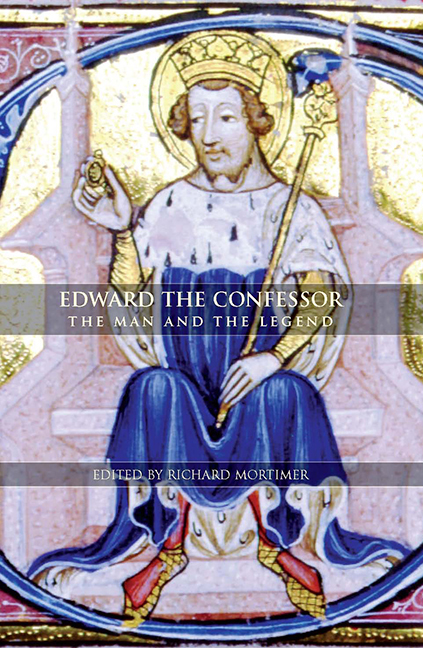Book contents
- Frontmatter
- Contents
- List of illustrations
- List of maps
- Preface
- Abbreviations
- Genealogical table
- 1 Edward the Confessor: the Man and the Legend
- 2 Edward the Ætheling (c. 1005–16)
- 3 Edward and Normandy
- 4 Edward the Confessor and the Succession Question
- 5 Edith, Edward's Wife and Queen
- 6 Edward the Confessor's Westminster Abbey
- 7 New Glimpses of Edward the Confessor's Abbey at Westminster
- 8 Craftsmen and Administrators in the Building of the Confessor's Abbey
- 9 The Sanctity and Canonisation of Edward the Confessor
- Bibliography
- Index
5 - Edith, Edward's Wife and Queen
Published online by Cambridge University Press: 25 October 2017
- Frontmatter
- Contents
- List of illustrations
- List of maps
- Preface
- Abbreviations
- Genealogical table
- 1 Edward the Confessor: the Man and the Legend
- 2 Edward the Ætheling (c. 1005–16)
- 3 Edward and Normandy
- 4 Edward the Confessor and the Succession Question
- 5 Edith, Edward's Wife and Queen
- 6 Edward the Confessor's Westminster Abbey
- 7 New Glimpses of Edward the Confessor's Abbey at Westminster
- 8 Craftsmen and Administrators in the Building of the Confessor's Abbey
- 9 The Sanctity and Canonisation of Edward the Confessor
- Bibliography
- Index
Summary
ON 23 JANUARY 1045 King Edward married Edith, daughter of Earl Godwine. That marriage and that woman are the subjects of this paper. Edith's biography could be told very briefly. She was the daughter of Earl Godwine of Wessex and his Danish wife, Gytha; she was educated, or raised, at the nunnery of Wilton; she married Edward in 1045. Specific events, especially datable events, in her career are few. They include her marriage in 1045; her expulsion from court in 1051 and return in 1052; possibly some involvement in the events of 1066, after the death of her husband; and possibly in those which began before his death, leading to the Norman Conquest. Certainly she survived Edward as a widow for nearly ten years, living at Winchester or Wilton. She died in 1075, when she was honoured by William the Conqueror with burial alongside Edward in Westminster Abbey
These are the bare bones of a life, and ones which centre on the dramatic events of 1051 and 1066. The reconstruction of that life in greater detail is a challenging task, given the nature of our sources, and especially given the absence of material for so many of the questions which we would now wish to answer. One route to understanding Edith and her life is to approach it by asking what it meant to be a king's wife and queen in mid-eleventh-century England. This involves adding to those bare bones, with evidence from Domesday Book, charters and other sources which provide precious information about her lands and patronage. Such material allows us to see something of her role in the rule of eleventh-century England and of her activities as a royal wife and queen. Consideration of Edith thus involves contextualising exiguous information. It must also entail careful scrutiny of some of the most well-known things about her. This is especially the case when dealing with the nature of her marriage to Edward, an issue which became central to later stories about the saint/king. Here the question is not so much what can we make of little, but wariness about the little we think we know. On that marriage, and more generally, we need to pay particular attention to one source – the one which Edith herself commissioned – the work we now know as The Life of King Edward who rests at Westminster (the Vita Edwardi).
- Type
- Chapter
- Information
- Edward the ConfessorThe Man and the Legend, pp. 119 - 138Publisher: Boydell & BrewerPrint publication year: 2009

